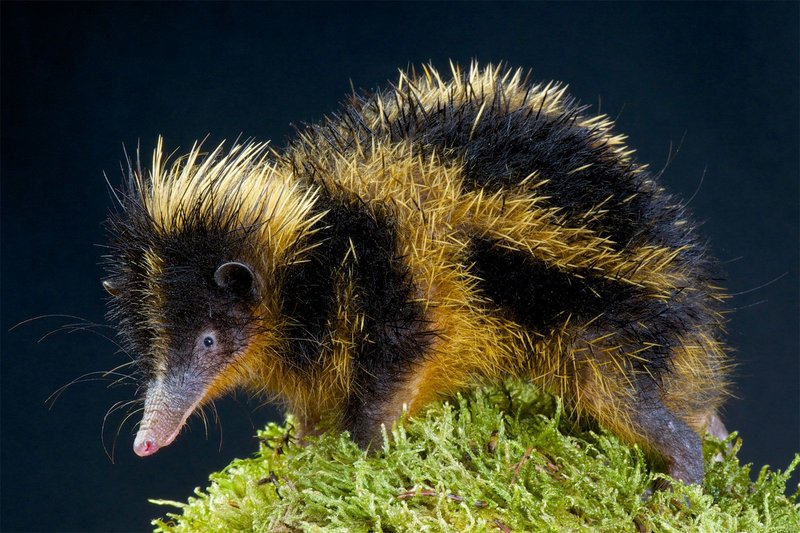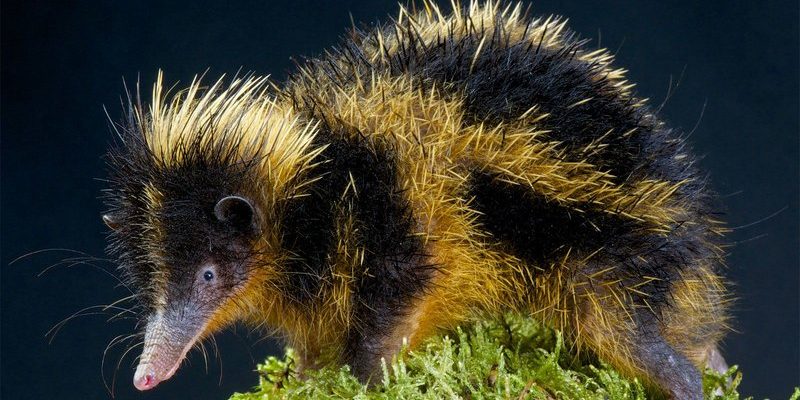
The tenrec family is diverse, with over thirty different species, each with its unique behaviors and dietary habits. Talking about their ways of hunting is like lifting a veil on a hidden world. Understanding their diet and hunting strategies not only reveals how they survive but also highlights their role in the ecosystem. So, let’s dig in and explore the tenrec’s fascinating eating habits and clever hunting tactics together.
What Do Tenrecs Eat?
Tenrecs are primarily insectivores, which means they mainly eat insects. Their diet can be a bit varied, depending on the specific species and their habitat. Some common food sources include:
- Insects like crickets, beetles, and caterpillars
- Small invertebrates such as worms and spiders
- Fruits and vegetables when available
- Small vertebrates in some cases, like frogs or small rodents
Honestly, these little guys are opportunistic eaters. If they’re feeling peckish and come across a juicy worm or a ripe fruit, they’ll go for it. For the more adventurous species of tenrec, scavenging for small vertebrates can add a nice protein boost to their diet.
Differences in Diet by Species
Different types of tenrecs have adapted unique eating habits. For example, the Common Tenrec, which is one of the most widespread species, relies heavily on insects. On the other hand, the Echinops Tenrec, also known as the spiny tenrec, has a more varied diet, enjoying both insects and fruits. This adaptability is crucial for survival, especially in Madagascar, where food sources can change with the seasons.
You might be wondering how they manage to find food in their thick, spiky coats. Tenrecs have a keen sense of smell, which helps them sniff out tasty treats hidden in the underbrush. It’s pretty fascinating to think about how their little noses guide them to food!
Hunting Strategies of Tenrecs
When it comes to hunting, tenrecs have several clever strategies up their sleeves. They’re generally nocturnal, which means they do most of their hunting at night. This behavior is beneficial for avoiding predators while searching for dinner.
One of their main hunting techniques is to dig. They use their sharp claws to burrow into the soil, unearthing insects and other small creatures hiding below the surface. This digging behavior not only helps them find food but also keeps them active and engaged in their environment.
Stalking and Pouncing
Some tenrec species, such as the Western Tenrec, also use a method of stalking their prey. They approach slowly and quietly, waiting for the right moment to pounce. This patience pays off, especially when hunting fast-moving insects. Just think about a cat waiting to catch a mouse; tenrecs show similar stealth and precision.
Additionally, they often hunt in groups, which can increase their chances of finding food. Imagine having friends help you search for snacks; that’s kind of what they do! By working together, they can cover more ground and spot food sources more easily.
Adaptations for Foraging
Tenrecs have several physical adaptations that make them efficient foragers. Their sharp claws are perfect for digging, and their sensitive whiskers help them navigate in the dark. These features show how well they’ve adapted to their environment.
Another interesting adaptation is their keen sense of hearing. Tenrecs can pick up sounds that are inaudible to humans, which aids them in locating rustling insects or other potential prey. It’s like having built-in night-vision goggles for sound!
Furthermore, their camouflaged fur helps them blend into their surroundings, making it easier to sneak up on unsuspecting prey. This feature not only aids in hunting but also serves as protection against predators.
Seasonal Diet Changes
Throughout the year, a tenrec’s diet may shift according to what’s available in their habitat. For example, during the rainy season, when insects are abundant, you’ll find them feasting primarily on these critters.
However, as the seasons change and food becomes scarcer, tenrecs can adapt by incorporating more fruits and vegetables into their meals. This flexibility in their diet is crucial for survival, especially in Madagascar’s unpredictable climate.
You might picture them switching from hunting to foraging for fruits like bananas or berries when insects are less available. It’s all about being resourceful!
Tenrecs and Their Role in the Ecosystem
Tenrecs play a vital role in their ecosystem. By feeding on insects, they help keep the populations of these critters in check. This control of insect numbers allows plants to thrive, as fewer pests mean healthier vegetation. You could think of tenrecs as little nature’s pest controllers.
Additionally, as they dig and forage for food, they aerate the soil, which is beneficial for plant growth. This process is kind of like natural tilling, helping to promote a healthier environment for various plant species.
The presence of tenrecs contributes to biodiversity. Their varied diets and hunting strategies mean they can thrive in different habitats, making them a crucial part of Madagascar’s unique ecosystem.
Challenges Faced by Tenrecs
Unfortunately, tenrecs face several challenges today. Habitat loss due to deforestation and human expansion threatens their survival. As their homes disappear, finding food becomes more difficult, leading to a decline in their population.
Additionally, climate change impacts their food sources. With changing weather patterns, the availability of insects and plants can fluctuate, making it harder for tenrecs to adapt.
Conservation efforts are crucial to protecting these unique creatures. By preserving their natural habitats and promoting biodiversity, we can help ensure that tenrecs continue to thrive in their environments.
The diet and hunting strategies of tenrecs are truly fascinating. From their resourceful methods of foraging for insects to their adaptability in changing diets, these little mammals illustrate the wonders of nature. They remind us of the delicate balance within ecosystems and how each species plays a role in the bigger picture.
As we explore and appreciate the unique lives of creatures like the tenrec, it becomes increasingly important to protect their habitats for future generations. By understanding their diets and hunting habits, we highlight their significance in the ecosystem and the urgent need for conservation efforts. So next time you think about these adorable creatures, remember the incredible ways they find food and survive in the wild.

